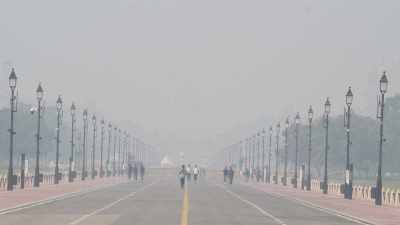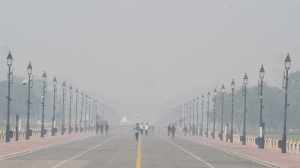Biocide from antifouling paints affecting marine life,research says
The presence of TBT level suggests that stringent legislative measures are required to limit the usage of these contaminants in marine paints.
A research study by the National Institute of Oceanography (NIO),Dona Paula,Goa,suggests that Indian waters,especially marine animals such as amphipods,lobster,crabs,shrimp,mussel,copepods,oyster,phytoplanktons and many other organisms are substantially being affected with Tributyltin (TBT),which is an active ingredient of many products that act as biocides against a wide range of organisms. It is mainly used as an antifoulant paint additive on ship and boat hulls,docks,fishnets,and buoys to discourage the growth of marine organisms such as bacteria,mussels and algae.
The presence of TBT level suggests that stringent legislative measures are required to limit the usage of these contaminants in marine paints. Otherwise,it can have a detrimental effect on our marine resources and ecosystem,which probably could not be reversed. TBT at a few nanogram levels is most toxic to several groups of organisms,and therefore,is used as a preferred biocide in antifouling paints. Due to its longer durability,high efficiency and reasonable cost,the use of TBT has increased during the last two decades. It is estimated that 140,000 kg of TBT containing antifouling paints are used on commercial and naval ships and boats each year in the USA.
Surfaces immersed in aquatic environments are colonised by various organisms. Such colonisation and growth of organisms on surfaces is known as biofouling. Biofouling is an economic concern as it enhances friction on the hull of ship thereby increasing fuel consumption,impairing heat transfer efficiency of heat condenser tubes in power plants and may increase corrosion of metals and alloys, explains DR N B Bhosale,emeritus scientist at NIO .
A team of 12 NIO researchers were involved in this study that lasted almost a decade. Extensive survey was carried out to establish the level of TBT contamination in Indian aquatic environment. Water,sediment and aquatic animals were collected from Maharashtra,Goa,Karnataka,Kerala,Gujarat,Tamil Nadu,Orissa and West Bengal. To study the TBT concentration in edible seafood,samples of fishes,oysters,mussels,squids,shrimps,crabs,solar shrimps and clams were studied from west coast of India. Globally,several million dollars have been spent annually to control biofouling on structures of economic importance. One of the commonly used methods to control fouling on ships is the application of paints containing toxic biocides. The biocide is slowly released into water,which does not allow the settlement of fouling organisms on the hull thereby,reducing the fouling.
However,TBT can diffuse from antifouling paints into surrounding waters where non-target organisms get exposed to this biocide. It is known that TBT is highly toxic to non-target organisms. For example,TBT at very low concentration (<10 nanogram/L) is acutely toxic to larvae of amphipods,lobster,crabs,shrimp,mussel,copepods,oyster,phytoplanktons and many other organisms. Besides,TBT and its derivatives (DBT and MBT) are used as stabilisers in PVC industry,industrial catalyst,as bactericide and fungicide in timber industry. TBT is introduced into aquatic system by ship trafficking,ship scrapping and repair or as industrial effluents or waste, Bhosale said. It is said that TBT is the most toxic compounds ever introduced by man in aquatic environments. TBT causes larval mortiltiy,reduced reproduction in lower invertebrates,imposex (Female turns into male) in gastropods,shell deformation and growth retardation in oysters due to its endocrine disrupting properties. Oyster fishery in Archon bay,France,was completely destroyed due to TBT pollution. Similar effects were seen in UK wherein,dogwhelk population had drastically decreased due to imposex. Due to catastrophic effects of TBT,it has been banned in several developed countries but it is still used in countries like India. The study was carried out to identify the level of TBT contamination in Indian aquatic environment.





- 01
- 02
- 03
- 04
- 05


























